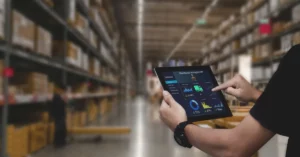There are at least three to four apps that we use on a daily basis. They can range from a social media app to a news app. If you observe closely, the applications we use on a daily basis have at least one feature that is appealing and draws us to the app.
Consider downloading a music application, use it for a few days and observe what you like/dislike about the app. It will give you an insight into your interaction with the application. If you find everything as per your convenience then you will continue to use the application. If you faced any inconvenience while using the app, you will replace the app with some other app. You will continue to look for an app until you find an app that meets your expectations.
Recently, I realized that it is User Experience (UX) that binds us to that one application. It strikes when you’re interacting with the application. We encounter perfect moments, when everything is at the right place, at the right time, as if it’s magic.
Interaction is an important component of making a perfect user experience. However, creating a perfect user experience requires inputs from the users. It is our input that leads to a perfect output.
Consider a smartphone that is designed in a particular manner. Unless we use the touch screen, there will be no output. Hence, it makes input an important part of user experience. We have been working with desktops and laptops for decades now, these electronic devices require an input from the user to process and produce an output. The interaction that is based on an input output model has been there for decades which still exists in UX.
It’s as if we were using interaction models from the Flintstones era in a Star Wars world. UX relies on the interaction made by the user (input) to move to the next step and display useful information (output). What if we could identify each user’s interaction in advance? What difference would it make to the UX?
Identifying the user input in advance is making anticipatory design go beyond personalization. For example- Shopping on an ecommerce website, it shows you clothes based on your taste & preferences and history, which is one of the examples of personalization. With the help of anticipatory design, the user interface adapts while you are interacting with the app.
Anticipatory design promises to eliminate any friction and increase efficiency which will in turn improve user experience. People return to products/services that deliver what they want, when they want it.
At Copper Mobile, we mine existing data for personalization opportunities thereby reducing barriers and pain point. We assert a hands-on user centric approach, employ deep research and go for extensive user testing. In depth research gives us knowledge and leads us to a contextual observation with which we can observe what the users are inclined to and the flow they follow while using an app.
We use this research to map the steps of the user and design the interaction accordingly. The ideal outcome of research and personalization coupled with the user centric designing creates a seamless anticipatory experience that users enjoy. This generates loyalty by having things appear as if they are magic.



